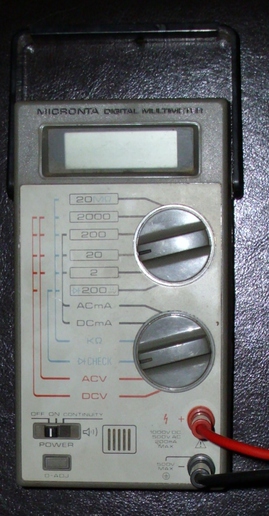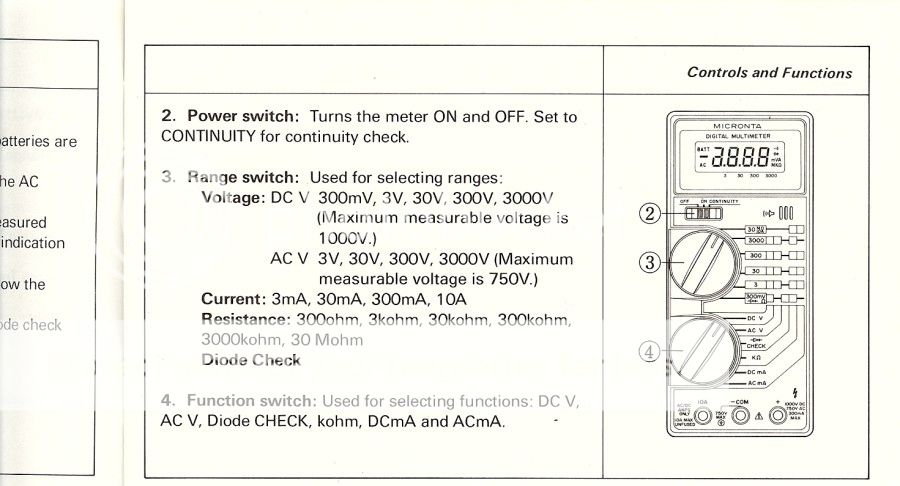One more lesson for today, please.
I've never used the ACmA or DCmA feature of my Micronta Digital Multimeter. The manual was printed in Korea in 1982 with skimpy details especially for a non-electrical person like me. Soooooooo.
If I tried to read amperage with it, I understand that my leads have to be in the circuit of whatever I'm testing. Okay. But....and here's the question(s):
1. The maximum capacity of the unit is 200 DCmA.
Whatsat?
2. I suppose that the maximum amperage of my tractor battery is about 650 CCA. Will my meter measure amperage of my lights or any other part of the electrical circuit on my tractor?
Hush, Chevy1908 or whatever.
Thanks everyone else.
I've never used the ACmA or DCmA feature of my Micronta Digital Multimeter. The manual was printed in Korea in 1982 with skimpy details especially for a non-electrical person like me. Soooooooo.
If I tried to read amperage with it, I understand that my leads have to be in the circuit of whatever I'm testing. Okay. But....and here's the question(s):
1. The maximum capacity of the unit is 200 DCmA.
Whatsat?
2. I suppose that the maximum amperage of my tractor battery is about 650 CCA. Will my meter measure amperage of my lights or any other part of the electrical circuit on my tractor?
Hush, Chevy1908 or whatever.
Thanks everyone else.



